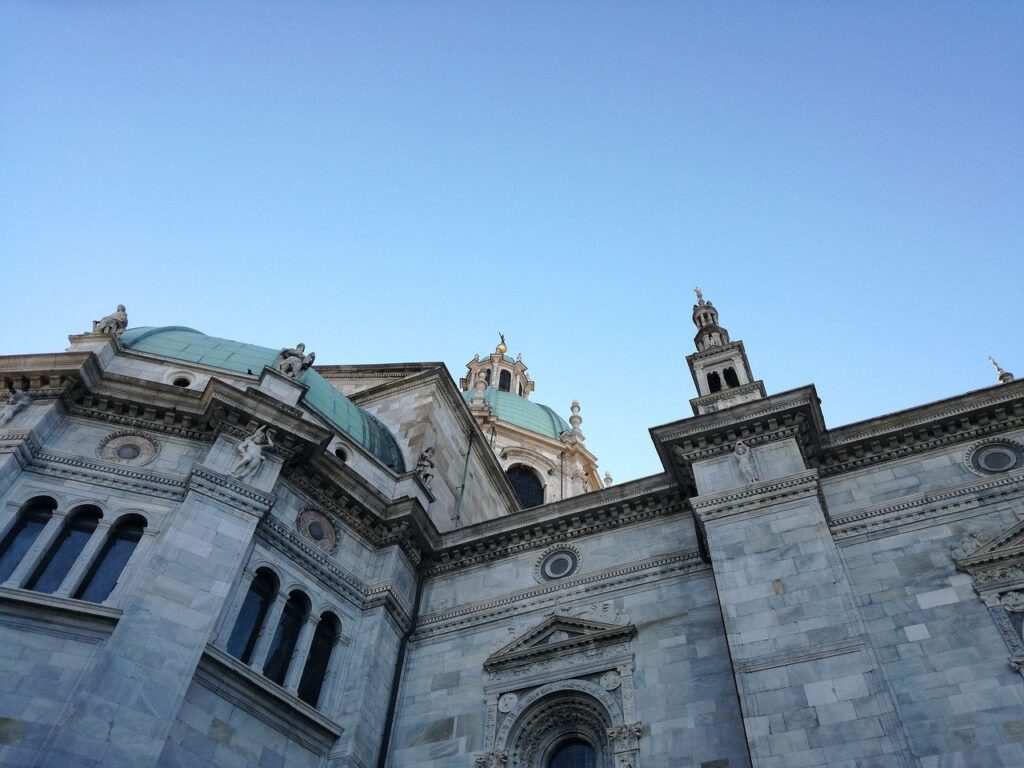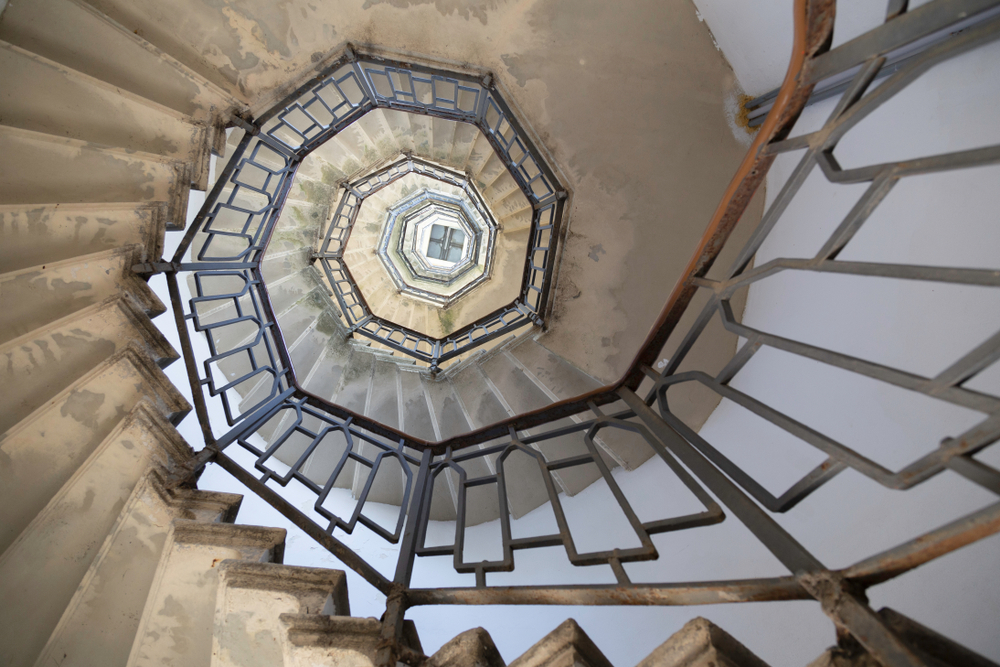Como travel guide
The history of Como
Lake Como’s largest town – Como – sits at the Southern tip of the lake. It has a long and rather illustrious history. It was once known as Comum. After being conquered from the Gauls by the Romans in 196 BC under the leadership of Marco Claudio Marcello, it then became a Roman colony under the rule of Julius Caesar. Caesar then went on to drain the swamp at the southern tip of the lake, leading to Novum Comum being founded.
Como was then a prosperous, thriving town for years and was an important centre for trade, attracting wealthy merchants, aristocrats and nobility. It fell under the Kingdom of the Lombards for centuries along with much of the rest of the Italian peninsula. But at the beginning of the 12th century, after a struggle between the Lombards and the Franks, Como became a free commune. In the early 12th century, the town was completely destroyed by the Milanese after they sided with Frederick Barbarossa but the Emperor ultimately rebuilt the city. He enlarged the city’s defensive walls and restored the hilltop Castel Baradello. Additional towers – Porta Torre, San Vitale and Porta Nuova were also built to defend the entrance to Como. Incidentally, these can still be seen today.
In the 14th century, Como fell under the rule of the wealthy Visconti family and the Sfrozas of Milan. It was during this time that Como’s silk and woollen industry started to thrive. Over the subsequent years, Como fell under the rule of the Spanish, French and Austrians.
The 1700s saw the birth of the ‘Grand Tour,’ a journey around Europe that was taken by rich upper class European men that was designed to increase their knowledge. Como was one of the favourite stopping points on this tour and tourism in this part of Italy was effectively born.
Como was finally liberated by Garibaldi in 1859 and became part of the Kingdom of Italy. These days, Lake Como is one of Italy’s most popular tourism destinations and the frequent backdrop to many a film. Como itself is a thriving, bustling city attracting thousands of holidaymakers each year, with tourism replacing the silk industry as its prime importance in its economy.
What to do in Como

Start your visit at the lakefront. A long promenade stretches along the banks of the lake and passes through one of Como’s main squares – the Piazza Cavour. This late 19th square is home to the Teatro Adriano and Chiesa Valdese. As you continue walking, look out for the modern art installation – Life Electric – by Daniel Libeskind, a homage to Alessandro Volta, developer of electric batteries. Or, if you’d rather not walk, why not consider hiring electric bikes in Como. You can book a 3 hour Como tour by bike which is a great way of seeing the sights. Or, for something even more different, how about a segway tour of Como.
About 20 minutes walk along the lake from the centre of Como is Villa Olmo. Entry is free to this stunning villa. Whilst there may not be much to see inside as the furniture has been removed, it’s worth the short visit as the interior is still very decorative. There is also some information on Alessandro Volta inside too. Not only that but the gardens are impressive and lovely to walk around too. Feel free to take a picnic with you to enjoy amid the immaculately manicured grounds or down at the water. Look overhead and you may well be lucky enough to see the sea planes flying above you as the Aero Club Como is based nearby. Plus, if you’re visiting in the Summer months, why not combine your visit with time spend at the adjacent lido.
After this, head through the city gates to the centre of Como. There are a number of notable religious buildings worth seeing during your visit to Como. First and foremost is the cathedral – the Duomo di Como, otherwise known as the Cattedrale di Santa Maria Assunta.

Primarily Gothic in style but with some Romanesque influences, the building has a central nave leading to the apse with symmetrical pillars, two transepts and an impressive cupola over the crossing. Inside you’ll find a number of important 16th century paintings along with a number of statues and some important tapestries.
Another church well worth visiting (albeit slightly off the beaten track) is the Basilica of Saint Addondio. It originally dates from the 11th century, but what you see today was created by the Benedictines. Whilst the outside is actually quite plain, head inside to admire the altar and series of beautiful coloured frescoes along with the lavishly decorated blue and gold ceiling. It’s also worth visiting the adjacent cloisters and courtyard.
And, if you have time to visit a third church, then head to the Basilica di San Fedele. The church is dedicated to Saint Fidelis and is filled with frescoes and paintings, the most notable of which is the early 16th century painting of the Madonna tra i santi Sebastiano e Rocco.
Otherwise, take the time to simply wander through Como’s charming streets, lined with fashionable Italian boutiques, interesting shops and cafes. Also look out for the Teatro Sociale, which dates back over 200 years. If you can, we can highly recommend that, whilst in Como, you spend an evening enjoying an opera performance at the Teatro Sociale.
You’ll also find some excellent museums in Como. These include the Museo Storico Giuseppe Garibaldi and the Como Archeological Museum (Museo Giovio). The former is housed in an old palazzo. A number of the rooms here have been decorated to show how people would have lived in bygone eras and the museum includes numerous artefacts such as furniture, lace and clothing from Como and the surrounding area. It’s a great chance to learn more about how Como’s residents would have lived in the past. The Museo Giovio is similarly home to a number of artefacts from pottery to jewellery and from agricultural machinery to stonework and also allows a glimpse into the history of Como and its inhabitants.
Other museums include the Pinacoteca Civica (Art Gallery), the Tempio Voltiano, a museum dedicated to Alessandro Volta and the Silk Museum.
You could finish off your visit to Como by taking a funicular ride from Como up the mountainside to the small village of Brunate. Running approximately every 10 minutes, the single track railway has been taking visitors up and down the hill since 1894 and heads through a rather lengthy tunnel before reaching its destination. From here, you’ll be able to enjoy a different perspective on Como. Enjoy fantastic views over the town from one of the many terraces or enjoy a bite to eat or a drink at one of the restaurants. If you want to venture a little further then walk from here to the Volta lighthouse. Just one word of caution: It may be just a 15-20 minute walk but the path is extremely steep and you’ll need to wear sensible shoes, if not proper walking boots. But the lighthouse is amazing and the 360 degree views from it are impressive.

Alternatively, if you’re feeling even more energetic, take a hike up to the summit of Monte Boletto where the views are even more impressive. If you’re not confident to do the hike alone, then why not consider a guided trek instead.
Or, another place to enjoy wonderful 360 degree views over Como is from the Castel Baradello. The castle is set amid a protected natural park and the view from the top is breathtaking. There are a number of different walks to reach it from the centre of the city.
Events in Como
There are a number of annual events that take place in Como. The first of these is the Parada Par Tucc, when you’ll find a parade makes its way through the city streets. After this comes the Festival Como Citta della Musica. This event runs for approximately 6 weeks a year from the beginning of July to mid August and involves a series of concerts performed by a wide variety of artists in the stunning setting of the Villa Olmo. July also sees the annual film festival.
The Fiera di Sant’ Abbondio is then held at the end of August, celebrating the life of Como’s patron saint. This is closely followed by the Palio del Baradello Festival, an important historical event in the city, marking the triumphant arrival of Frederick Barbarossa and his wife Beatrix of Burgundy into Como in 1159.

You’ll find plenty of people dressed in Medieval costumes, knights on horseback, flag bearers, a tug of war and cart race during the two week long celebrations. Every September, Como also hosts a book fair.
Alternatively, head to Como at Christmas and enjoy the Christmas markets that fill the square around the Duomo. You’ll also find the town lit up with beautiful Christmas lights.
Where to eat in Como
Osteria dell Gallo: A family run restaurant, packed full of character and serving up traditional Italian food. Opt for the owners menu of the day and you won’t be disappointed!
La Cava dei Sapori: Owned and run by the Riva family, chef Ernest Dedjonaj creates some wonderful modern Italian dishes (as well as pizzas) at this Como restaurant. Emanuele Riva is a professional sommelier and ensures that the accompanying wines come up to scratch.

Kitchen: For fine dining, head to Kitchen, a Michelin star restaurant in a beautiful setting within a private park.
Theoria: Another Michelin star restaurant offering a high end dining experience. Opt for the chefs table if you’re celebrating a special occasion and select the tasting menu.
Pizzium: Along with the pizzas served up at La Cava dei Sapori, Pizzium dishes up our favourite pizzas in Como.
Or, if you want to cook up a meal yourself, then head to the weekly outdoor market in Como to buy your ingredients. It’s open on Tuesdays and Thursdays from 8 until 1 and then all day Saturday from 8 until 7. You’ll find it next to Porta Torre, the main entrance to the town.
Where to stay in Como
If you’re wanting to explore Como, it’s actually easy to stay anywhere on the lake and use the public boat service to reach Como itself. Bookings For You offer some lovely Italian Lakes villas and apartments which you could use as a base to explore Como as well as the wider Italian Lakes region.
Alternatively, if you’re looking for a hotel in Como, then check out Expedia for a great range of Como hotels at great rates.
How to travel to Como

By plane: The nearest airport to Como is Milan Malpensa which is about a 45 minute drive away. Alternatively, there is also Milan Linate (60 km) or Milan Bergamo (85 km).
By bus: A service from Milan to Como is operated by Flixbus.
By train: It’s 40 minutes from Milan Centrale to the main train station in Como – Como S. Giovanni. Trains leave twice an hour. Purchase your tickets at Omio. Alternatively, the Malpensa Express is a train service operated by Trenord from Milan Malpensa airport to Como Nord Lago, which is a 5 minute walk from the centre of Como. Once again, tickets can be purchased at Omio.
By car: Getting to Como from Milan Malpensa airport is extremely easy. Just follow the signs for Como / Chiasso, taking the A36 motorway before joining the A9. You continue on this road until the Como Centro exit.
By boat: A regular network of boats criss-crosses lake Como all day long, making it easy to reach from all the other towns and villages on Lake Como.


